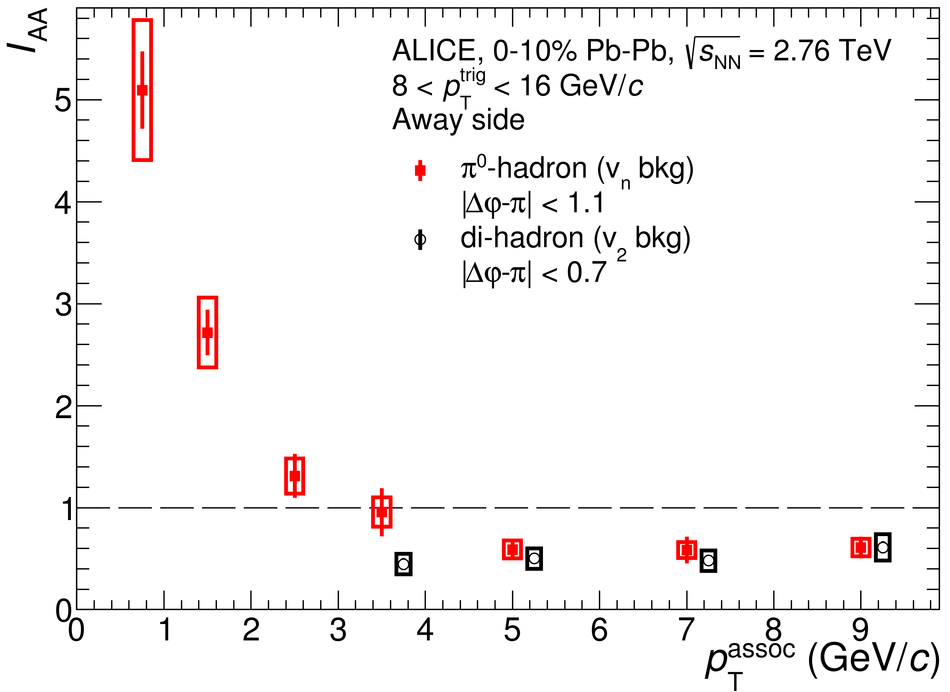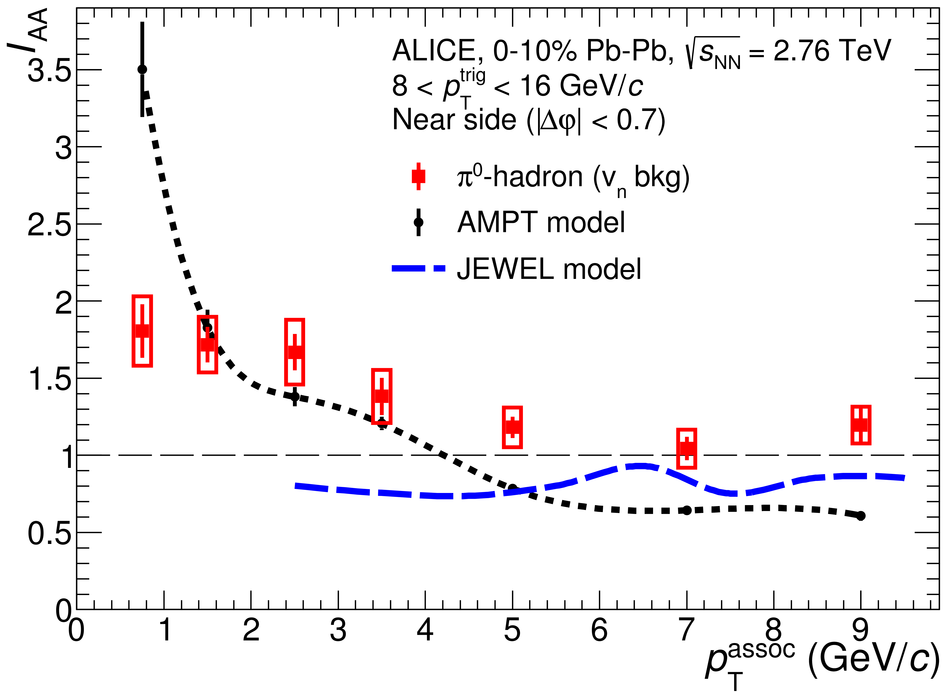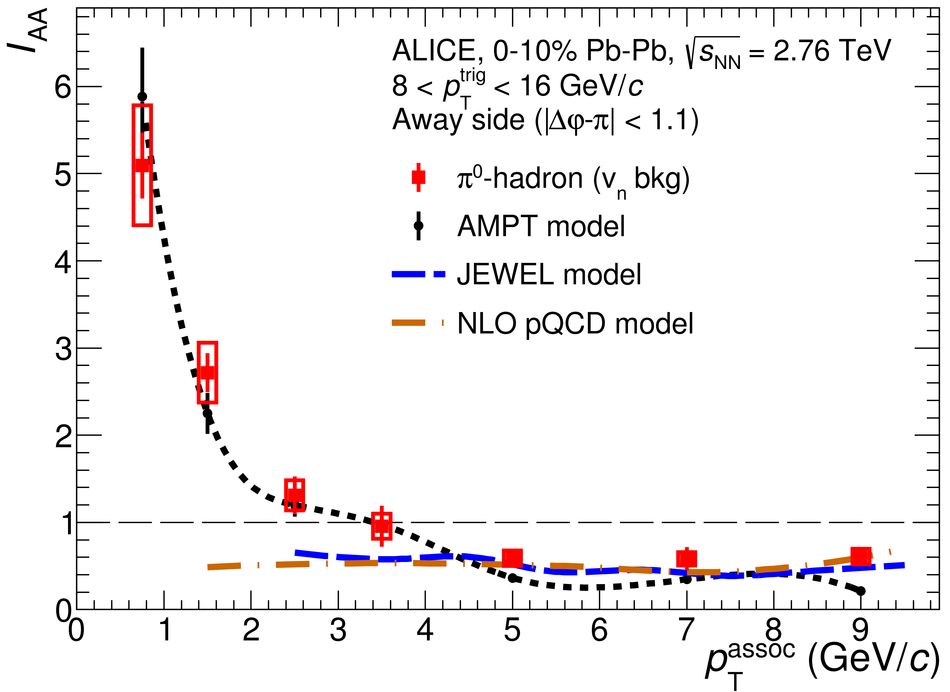We present measurements of two-particle correlations with neutral pion trigger particles of transverse momenta $8 <~ p_{\mathrm{T}}^{\rm trig} <~ 16~\mathrm{GeV}/c$ and associated charged particles of $0.5 <~ p_{\mathrm{T}}^{\rm assoc} <~ 10~\mathrm{GeV}/c$ versus the azimuthal angle difference $\Delta\varphi$ at midrapidity in pp and central Pb-Pb collisions at $\sqrt{s_{\mathrm{NN}}}=2.76$ TeV with ALICE. The new measurements exploit associated charged hadrons down to $0.5~\mathrm{GeV}/c$, which significantly extends our previous measurement that only used charged hadrons above $3~\mathrm{GeV}/c$. After subtracting the contributions of the flow background, $v_2$ to $v_5$, the per-trigger yields are extracted for $|\Delta\varphi|<~0.7$ on the near and for $|\Delta\varphi-\pi| <~ 1.1$ on the away side. The ratio of per-trigger yields in Pb-Pb to those in pp collisions, $I_{\mathrm{AA}}$, is measured on the near and away side for the $0$--$10$\% most central Pb-Pb collisions. On the away side, the per-trigger yields in Pb-Pb are strongly suppressed to the level of $I_{\mathrm{AA}} \approx 0.6$ for $p_{\mathrm{T}}^{\rm assoc} > 3~\mathrm{GeV}/c$, while with decreasing momenta an enhancement develops reaching about $5$ at low $p_{\mathrm{T}}^{\rm assoc}$. On the near side, an enhancement of $I_{\mathrm{AA}}$ between $1.2$ at the highest to $1.8$ at the lowest $p_{\mathrm{T}}^{\rm assoc}$ is observed. The data are compared to parton-energy-loss predictions of the JEWEL and AMPT event generators, as well as to a perturbative QCD calculation with medium-modified fragmentation functions. All calculations qualitatively describe the away-side suppression at high $p_{\mathrm{T}}^{\rm assoc}$. Only AMPT captures the enhancement at low $p_{\mathrm{T}}^{\rm assoc}$, both on the near and away side. However, it also underpredicts $I_{\mathrm{AA}}$ above $5$ GeV/$c$, in particular on the near-side.
PLB 763 (2016) 238-250
HEP Data
e-Print: arXiv:1608.07201 | PDF | inSPIRE
CERN-EP-2016-195








